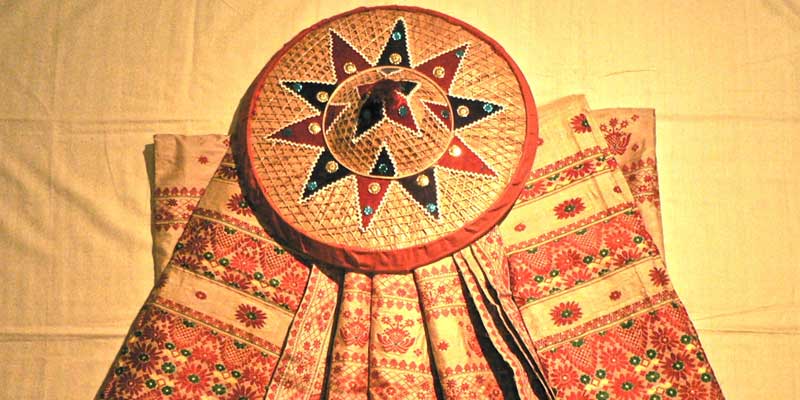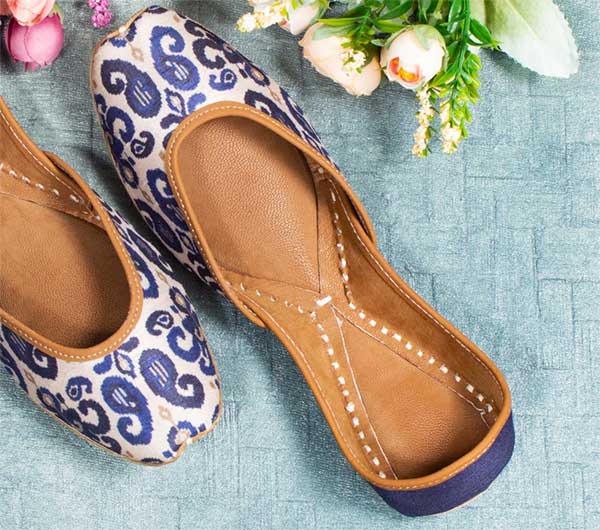I’m sure the cotton and silk sarees in your grandma’s cupboard might have lured you at some point in your life. There’s a different charm that Indian handloom carries. Whether it’s the grace in that 6 yards of a hand-woven saree or the royal charm that a Matka-Silk kurta has, Indian handloom carries a timeless tradition. A legacy that dates back to the 3000 BC, India has seen the handloom grow and transform. The handloom lives through the stories in Indian epics, the ancient frescos, and culture. There’s a different kind of regal and unmatched essence in every piece that’s weaved. The bunkars have been passing on their legacy to the upcoming generations, only to keep the tradition alive!

Rejuvenating the Indian handloom industry
It requires a lot of effort to create perfect motifs on a sheet of cloth. Despite the royal status of handloom creations, the condition of weavers in India is miserable. The handloom workers need urgent economic upliftment, especially those in states like Uttar Pradesh and Andhra Pradesh. The painstaking effort put into designing the perfect saree and (or) salwar deserves to be promoted and rewarded. Dedicated and vocal patrons are required to keep the Indian handloom industry alive in the time of widespread popularity of western wear.
The Role of fashion designers in promoting ethnic designer wear
Reputed Indian fashion designers are putting Indian handloom back on the map by encouraging the work of local weaver communities. By integrating the intricate handiwork into the fashion week line ups, they are saving our textile industry. Designers like Ritu Kumar have said that ‘handloom revival is more than just a hashtag.’ Kumar’s exclusive handloom collection under the label Varanasi Weaves (in collaboration with the Ministry of Textile), is spreading awareness about our vibrant textile industry through viral posts on social media. She is shedding light on the working condition of the weavers in Benaras and trying to improve it.
The popularity of Indian weaves has grown leaps and bounds. Thanks to labels like Ekaya Benaras, Rahul Mishra, and Shweta Gupta. These labels are creating a global presence for the handloom threads. The cultural significance combined with the handwork of the weaving fraternity is what makes Indian handloom even more special.
The technological advancement needs to be applauded for further growth in the textile sector. The use of modern machines has accelerated production, reduced downtime, and human effort while increasing efficiency. This has made handloom products easily accessible and affordable, thus increasing sale.
How homegrown brands are leading the race to popularize ethnic fashion

Homegrown online labels like Viva and Diva are promoting the industry by making handloom products readily available across the country. The brand takes the concept of Haute couture and makes it accessible to the general audience while celebrating the rich diversity of India. Viva and Diva have a history of supporting social causes. The most recent being Face of Courage campaign, providing a voice to the acid-attack survivors like Laxmi. They collaborated with her and showcased her inner beauty and indomitable courage. Not just sarees, salwar, or handloom fabric, there are Indian brands that are promoting Indian craftsmanship by venturing into traditional footwear and jewelry.
One such brand, Jivaana, is promoting Indian style footwear, jewelry, and purses through its online presence. When paired with the ethnic attire, traditional juttis stand out among all other kinds of footwear. They are hand-crafted and printed, thus adding to the appeal. Ventures like Jivaana not just promote our rich culture but also employ a lot of local talents.
The textile industry is undergoing a revolutionary change with homegrown brands and designers at the helm. The government is doing its part by supporting global display and showcase. It’s great to see the fashion industry coming back to the roots. The contemporary vibe is maintained while promoting the traditional handloom threads; a balance the industry requires.